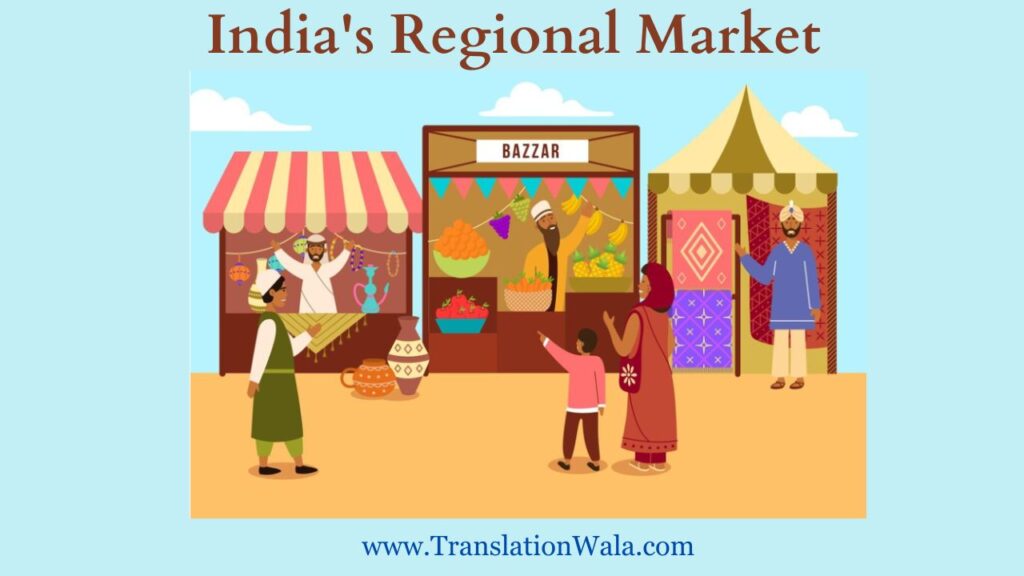India’s regional market has a lot of promise for businesses, but it’s hard to get around without a carefully thought-out plan. In this lively and changing world, one-size-fits-all solutions don’t usually work. For companies to really do well, they need to know and meet the specific wants and needs of each area.
Here’s why adapting your strategy for India’s regional market is crucial:
- Diverse Demographics and Cultural Nuances:
India has a huge number of different religions, languages, cultures, and ways of life. These differences show up in the different tastes, buying habits, and media-watching habits of people in different areas. For example, something that appeals to a tech-savvy customer in Bangalore might not do the same for a farmer in the countryside of Punjab.
- Varying Levels of Economic Development:
India’s economy is very different from one part of the country to another. Cities have lots of extra money, but rural areas have big problems with their finances. This difference means that we need to know more about how people in different areas feel about prices and their buying power. Selling high-end goods at exorbitant prices might work in places where people have a lot of money, but it will fail horribly in places where people don’t have much money.
- Regional Language Preferences:
Even though English is spoken by some, most Indians prefer to talk to each other in their own regional languages. So, your marketing materials, customer service, and even the boxes your products come in need to be translated into the local language so that you can communicate clearly and earn the trust of people in that area.
- Unique Media Consumption Habits:
Regional media sites have a big impact on how people think and what they like. While national media may reach a lot of people, neighborhood newspapers, TV stations, and radio stations have a lot of power in their own areas. Working with these local media outlets can help spread the word about your brand and reach people in your area more effectively.
- Evolving Regulatory Environment:
Different areas may have different rules about how businesses can run. To avoid legal problems and make sure you’re following the rules, it’s important to know the unique rules that apply to each area where you do business.
Also Read: How to Choose the Right Transliteration Strategy for Your Brand?

Adapting Your Strategy for Regional Success:
Now, let’s delve into actionable steps for adapting your strategy to each region:
- Conduct Comprehensive Market Research:
Researching the market carefully is very important. Look at the income levels, cultural tastes, and media viewing habits of people in the area. Get advice from people who live in the area and do polls to find out what your target audience in each region wants and needs.
- Localize Your Marketing and Branding:
Translate your image and marketing materials into languages that people in that area speak. You might want to use local culture themes and images to connect with your audience more deeply.
- Develop Region-Specific Product Offerings:
Make your products fit the tastes and wants of people in the area. You might want to change the product’s features, packing, and price to meet the needs of people in different areas.
- Build Regional Partnerships:
Work with local companies, media sites, and leaders to get your message out there and use their knowledge of how the local market works to your advantage.
- Build a Diverse Team:
Find and give power to a varied team that knows and respects the languages and cultures of the area. This will make sure that marketing, communication, and customer service work well in different areas.
- Leverage Technology for Effective Localization:
Machine translation tools, content management systems, and other technologies can help you simplify and improve your localization processes. This will help you make sure that your brand and messages are the same in all areas.
- Monitor and Adapt:
Markets are always changing. Check in on your regional plans often to see how they’re working and make changes based on market trends, what your competitors are doing, and what your customers are saying.
Also Read: When to Use Language Translation Services?
Success Stories:
A number of businesses have been able to change their methods to do well in India’s regional market. Hindustan Unilever, for example, makes different versions of its products for different regions and uses local languages in its advertising. Amazon has changed the way it does business to fit the needs of India’s large rural population and its desire for cash-on-delivery.
Businesses can grow a lot and build long connections with their customers if they understand and adapt to the unique features of India’s regional markets. Remember that there is no one way to be successful. The key is to make sure that your plan fits the wants and tastes of each area.



